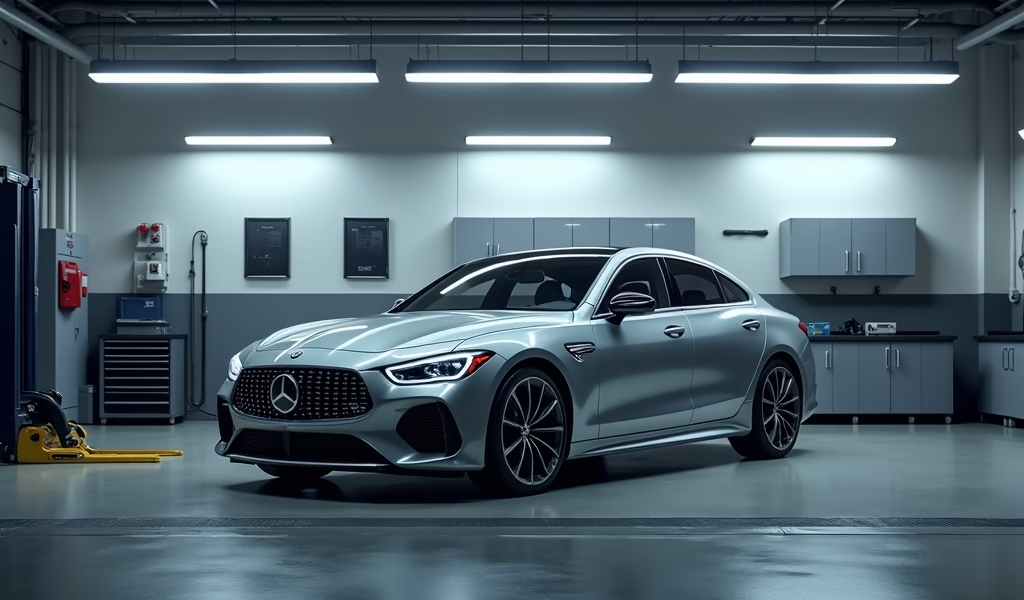Overview
This guide provides five essential tips for successfully buying a used car: thoroughly researching vehicles and market values, conducting comprehensive inspections (preferably with a professional mechanic), negotiating effectively based on the car’s condition, securing appropriate financing with favorable terms, and ensuring all paperwork is properly completed for legal protection. The author, a mechanic with 25 years of experience, emphasizes that proper preparation before purchase prevents costly repairs and financial regrets later.
Table of Contents
- Understanding the Used Car Market
- Research is Your Best Friend
- Inspection Essentials
- Mastering the Art of Negotiation
- Financing Without Regrets
- Paperwork and Legal Protection
- Conclusion
- Frequently Asked Questions
Understanding the Used Car Market
Finding the best way to buy a used car is like trying to navigate a minefield while blindfolded – one wrong step and boom goes your bank account. After 25 years as a mechanic, I’ve seen too many folks drive off in vehicles that became money pits faster than they could say “check engine light.”
Today’s used car market is more complex than ever. Prices fluctuate based on everything from fuel costs to chip shortages, and what constitutes a “good deal” changes almost monthly. This volatility makes understanding current market conditions essential before you even think about test driving that shiny sedan that caught your eye.
The good news? With some mechanical know-how and strategic planning, you can find a reliable used vehicle that won’t drain your savings account. The following five care tips represent what I wish every customer knew before they showed up at my shop with their “great deal” that needed $3,000 in immediate repairs.
Research is Your Best Friend
Before you set foot on a dealership lot or reply to that marketplace ad, arm yourself with knowledge. Research isn’t just helpful when buying a used car – it’s your financial body armor.
Start by narrowing down models that fit your needs, not your wants. That sports coupe might look tempting, but if you’re hauling kids and gear, you’ll regret the purchase faster than you can say “no trunk space.” Consider what factors matter most for your specific situation – fuel economy, maintenance costs, safety features, or cargo capacity.
Once you’ve got a shortlist, dive into the reliability histories. Some vehicles are notorious for specific failures at predictable intervals. For example, certain 2010-2014 midsize sedans with automatic transmissions tend to fail around 90,000 miles – a $4,000 repair that’s entirely preventable by choosing a different model. Resources like Consumer Reports reliability guides and model-specific forums can reveal these patterns.
Check current market values using multiple sources:
- Kelley Blue Book for general value ranges
- NADA guides for dealer perspective
- Recent local sales for real-world pricing
The vehicle history report is non-negotiable. Services like CarFax or AutoCheck will reveal accident history, title status, odometer discrepancies, and service records. This $40 investment can save you thousands in unexpected repairs and headaches. I’ve seen too many customers who skipped this step only to discover their “clean” car had been previously submerged in floodwater.
Finally, research the seller. Whether it’s a dealership or private party, check reviews, complaints, and their general reputation. A vehicle with a slightly higher price tag from a reputable seller often costs less in the long run than a “bargain” from someone with questionable practices.

Inspection Essentials
As a mechanic who’s inspected thousands of vehicles, I can tell you with certainty: your eyes and ears are powerful diagnostic tools. A thorough inspection is the difference between driving home in a reliable used car and towing one to my shop the next day.
Start with a methodical exterior walk-around in good lighting. Look for mismatched paint, uneven panel gaps, or fresh caulking around seams – all telltale signs of collision repair. Check door, hood, and trunk alignment; poor fitment suggests structural damage. Examine glass for chips or cracks that could spread.
Tire inspection reveals more than you might think. Uneven wear patterns tell stories about alignment issues, suspension problems, or poor maintenance habits. A vehicle with four different tire brands screams “neglect” louder than words ever could.
Under the hood, even non-mechanics can spot warning signs:
- Fluid leaks (look for stains or wetness)
- Corroded battery terminals
- Dirty oil or low fluid levels
- Burnt smells or unusual odors
- Modifications that look amateur or haphazard
The test drive is your golden opportunity to detect issues. Drive at various speeds and on different road surfaces. A 10-minute spin around the block won’t reveal problems that emerge after 20 minutes of highway driving. Test every function: air conditioning, heater, power windows, locks, sunroof, and electronic features.
Listen carefully for:
- Unusual noises when turning (CV joints)
- Clunks over bumps (suspension issues)
- Grinding during braking (worn brake components)
- Transmission hesitation or hard shifts
For vehicles that pass your initial scrutiny, investing $100-200 in a pre-purchase inspection by an independent mechanic is money well spent. I can’t count how many times I’ve saved customers thousands by identifying hidden issues during these inspections. If a seller refuses to allow this step, walk away immediately – they’re hiding something.
The process of buying a used car should always include this critical inspection phase. Remember, you’re not just buying transportation – you’re purchasing someone else’s problems if you’re not careful.
Mastering the Art of Negotiation
Negotiating for a used car isn’t about winning or losing – it’s about reaching a fair price based on the vehicle’s actual condition. As someone who’s repaired the aftermath of thousands of “great deals,” I can tell you that effective negotiation starts with knowing the vehicle’s true value and flaws.
Enter negotiations with two numbers firmly in mind: your target price (what you hope to pay) and your maximum price (your absolute ceiling). Without these anchors, emotion can take over, leading to regrettable decisions. I’ve seen too many customers justify overpaying because they “fell in love” with a vehicle – trust me, that romance fades quickly when repair bills start arriving.
Use your inspection findings as negotiation leverage. If you’ve identified specific issues – worn brakes, aging tires, needed maintenance – calculate those costs and present them factually. “The vehicle needs approximately $800 in brake work and the timing belt is due for replacement at $600. I’m still interested, but the price needs to reflect these immediate expenses.”
Timing your purchase can significantly impact negotiation power. End of month, quarter, or year often brings motivated sellers facing quotas. Weekdays typically offer more relaxed negotiating environments than busy weekends when multiple buyers might compete for the same vehicle.
Beware of common negotiation traps:
- Monthly payment focus (obscures the total cost)
- Limited-time offers (“This deal expires when you leave!”)
- Emotional appeals (“I can tell this is the perfect car for you”)
- Add-on pressure (extended warranties, protection packages)
Perhaps the most powerful negotiation tactic is your willingness to walk away. When a seller senses you’ve emotionally committed to a purchase, your leverage evaporates. Remember that in a market with thousands of used cars, no single vehicle is truly irreplaceable. Another comparable option is always available.
Polite persistence beats aggressive demands every time. Maintain respectful communication while firmly advocating for a fair price. I’ve watched customers secure better deals through patient, informed negotiation than those who attempt intimidation tactics.
Financing Without Regrets
Securing proper financing is as crucial as picking the right vehicle. As a mechanic, I’ve seen too many folks struggling with high monthly payments while simultaneously facing repair bills they can’t afford – a double financial whammy that could have been avoided.
Before visiting dealerships, get pre-approved financing through your bank or credit union. This accomplishes two things: it establishes your realistic budget and gives you leverage against dealership financing offers. The finance office is often where dealerships make their largest profits, not on the vehicle sale itself.
Understand the relationship between loan terms and total cost. That 72-month loan might offer temptingly low monthly payments, but you’ll pay significantly more in interest and likely be “underwater” (owing more than the car is worth) for years. I recommend keeping financing terms to 60 months or less whenever possible.
Interest rates for used cars typically run higher than new car rates, making it even more important to shop around. A 2-3% difference in interest rate can translate to thousands of dollars over the life of the loan. Credit unions often offer the most competitive rates for used vehicles.
Consider these financing options carefully:
- Traditional bank auto loans (secure, predictable terms)
- Credit union financing (often lower rates, more flexible terms)
- Dealership financing (convenient but potentially higher cost)
- Online lenders (varying rates, quick approval processes)
Be extremely cautious with “buy here, pay here” dealerships that offer in-house financing. While they serve buyers with damaged credit, their interest rates often approach predatory levels (sometimes 20% or higher), and their vehicles frequently have reliability issues. I’ve seen too many of these cars in my shop with repair costs that quickly exceed the vehicle’s value.
When buying a used car off Facebook Marketplace or from private sellers, securing financing requires extra steps. Most banks will want the vehicle’s VIN, mileage, and condition assessment before approving a loan. Plan ahead to avoid losing out on a good vehicle while sorting financing details.

Paperwork and Legal Protection
The least exciting but potentially most important aspect of buying a used car is ensuring all paperwork is complete and accurate. As someone who’s helped customers untangle title issues and warranty disputes, I can assure you that proper documentation prevents nightmares.
The vehicle title is your most critical document – examine it carefully for liens, correct VIN matching, and proper signatures. A “clean” title means the vehicle hasn’t been salvaged, flood-damaged, or rebuilt. If the seller doesn’t have the title in hand or it shows any discrepancies, walk away immediately. Title issues are among the most difficult and expensive car problems to resolve.
Essential documentation includes:
- Title properly signed and notarized (state requirements vary)
- Bill of sale with accurate mileage, price, and condition notes
- Warranty information (if applicable)
- Maintenance records (especially for major services)
- Emissions/inspection certificates (where required)
- Release of liability form (protects you from future claims)
Understand exactly what consumer protections apply to your purchase. Dealer sales typically include implied warranties and potential “lemon law” coverage, while private party sales are generally “as-is” with minimal legal recourse after purchase. This distinction should influence both your inspection thoroughness and price negotiations.
If purchasing an extended warranty or service contract (which I generally recommend only for luxury or complex vehicles), read every word of the agreement. Many customers discover too late that their expensive warranty excludes exactly the components that failed. Pay special attention to coverage limitations, deductibles, and claim procedures.
Complete the title transfer promptly according to your state’s requirements – typically within 30 days of purchase. Failing to properly transfer ownership can result in significant legal and financial complications, especially if the vehicle is involved in an accident or accrues violations while still registered to the previous owner.
Make copies of all documentation and store them both physically and digitally. Having accessible records becomes invaluable during warranty claims, when selling the vehicle, or if legal disputes arise. Proper documentation provides peace of mind that’s well worth the organizational effort.
Conclusion
Finding the best way to buy a used car doesn’t require mechanical expertise – just methodical attention to the process. By researching thoroughly, inspecting carefully, negotiating strategically, securing appropriate financing, and completing all documentation properly, you transform from potential victim to empowered buyer.
Remember that time invested before purchase saves both money and headaches afterward. The used car that seems “good enough” today might become tomorrow’s regret, while patience often leads to finding the right vehicle at the right price with the right history.
As a mechanic who’s witnessed countless post-purchase disappointments, I can assure you that these five care tips represent the accumulated wisdom of decades in the automotive industry. When properly applied, they dramatically increase your odds of driving away in a reliable used vehicle that meets your needs without draining your bank account.
Your next used car purchase doesn’t have to be stressful or risky. With these guidelines, you’re equipped to navigate the market with confidence and drive home satisfied – in a vehicle that will serve you well for years to come.
Frequently Asked Questions
What’s the best time of year to buy a used car?
Late fall and winter months (October through January) typically offer better pricing due to slower sales periods. End-of-month, end-of-quarter, and end-of-year timing can provide additional leverage as dealers work to meet sales quotas.
How many miles is too many for a used car?
Rather than focusing solely on mileage, evaluate the vehicle’s maintenance history and condition. A well-maintained 100,000-mile vehicle often presents better value than a neglected 50,000-mile car.
Should I buy from a dealer or private seller?
Dealers typically offer some legal protections and possibly limited warranties but at higher prices. Private sellers generally offer lower prices but sales are usually “as-is” with no recourse after purchase.
Is a certified pre-owned vehicle worth the extra cost?
CPO vehicles include detailed inspections and extended warranty coverage, making them worthwhile for buyers seeking peace of mind. The value proposition is strongest for near-luxury and luxury vehicles where repair costs are higher.
How much should I budget for unexpected repairs when buying a used car?
Set aside 15-20% of the vehicle’s purchase price for potential first-year repairs and maintenance. Even well-inspected vehicles may need unexpected work as you put miles on them.

